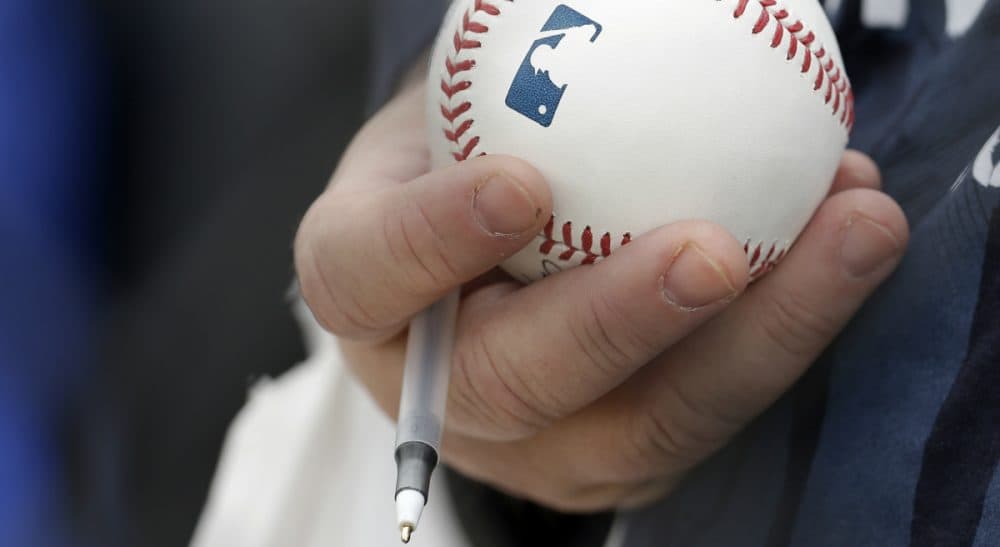Advertisement
Why The Media Shouldn’t Cover Baseball’s Spring Training Every Day

Spring training is about to begin. Or, as its known in Boston and most other MLB cities — six weeks of journalistic waterboarding.
Very little, if any, actual news is ever generated in the time that baseball teams spend getting ready for the season. But that won’t stop the newspapers in Boston and elsewhere from bombarding us with banal and sleep-inducing stories on a daily basis.
The New York tabloids have been in Florida for two weeks, faithfully writing . . . nothing of import. (And on a daily basis.) The New York Times (more on it later) just sent down its Mets writer and then told him to take some personal time when it was revealed the team was making one player available.
Very little, if any, actual news is ever generated ... But that won’t stop the newspapers in Boston and elsewhere from bombarding us with banal and sleep-inducing stories on a daily basis.
Meanwhile, here in Boston, we’ve learned that newcomer Hanley Ramirez, who is often hurt, is concerned about staying healthy (whew!) and that Koji Uehara was injured last year (who knew?) and that Pablo Sandoval is, er, a bit chunky (stop the presses!).
Most of these bell-ringers came after a flurry of get-a-lifers gathered at Fenway Park in bitter cold to watch and cheer (!) as the Red Sox equipment truck left for Florida. If that is not the sign of the apocalypse, I don’t know what is.
This is not to suggest newspapers (and other media outlets) not have reporters at spring training. Of course they should. This is instead an appeal to sports and assignment editors across the board to think outside the box and recognize spring training for what it really is: an expensive, six-week sham of non-news stories packaged as must-read, daily journalism.
You’re unlikely to see such an approach in Boston, where we’ve been inured to reams of Red Sox coverage. I always wondered why John Henry wanted to buy the Globe when, based on how the newspaper treated his team, he was basically the de-facto owner. (I refer you to August 2007, when the Globe actually paired the Celtics’ acquisition of Kevin Garnett with the Red Sox acquisition of Eric Gagne on the front page. Talk about false equivalence.)
Part of this slavish devotion to the norm is, well, a slavish devotion to the norm. That’s how we’ve always done it! Or the feeling that the fans can’t get enough of it (which, if true, says a lot about the intelligence of the reader). Part of it is the ineluctable reaction to the talk radio culture and the expansion of web sites and cable outlets.
The Times tries to be different. (Full disclosure: I am an occasional contributor to the newspaper.) It does not box itself in by demanding stories every day on both the Mets and Yankees. It encourages its writers to think creatively and gives them the time to explore and investigate a non-mundane story. This year, when a Times’ beat writer gets a week off, a stringer will likely monitor the team he covers with no expectation of daily input.
As one Times editor told me, “if you’re committed to having something every single day, you are stuck. It’s just talk radio on the written page, a daily drip-drop of stuff that all sounds the same.”
The Times already this season did what most newspapers would consider unthinkable: it took its Knicks’ writer off the beat as, the paper humorously noted, a humanitarian gesture. The paper still covers the Knicks at home. It recently got an exclusive sit-down with the reclusive (for good reason) Phil Jackson, the man overseeing the debacle at Madison Square Garden. It also covered Carmelo Anthony’s season-ending knee injury.
What it does not do is cover the Knicks every day, home and away. It concluded, rightfully, that that was a futile and, in the end, unrewarding enterprise for its staff and its readers.
It’s just talk radio on the written page, a daily drip-drop of stuff that all sounds the same.
In the past, newspapers stopped covering bad teams for financial reasons. (In the 1980s, L.A. Clippers writers pretty much stopped traveling in January.) The Times has used its Knicks money to send beat writer Scott Cacciola hither and yon for a series of basketball articles under the tease, “Not The Knicks.” Instead of the daily “drip-drop” from a truly horrible team, Times readers instead have read quirky stories on Division III college teams and high school teams from across the country.
Last fall, with the Giants and Jets in freefall, and both playing equally horrible teams on a particular Sunday, the Times advised fans and readers to skip the game and do something else. It asked its staffers for suggestions. One thought a trip to a certain graveyard in Queens would be ideal — to wish the teams better luck in the days ahead.
Would that every news organization adopt a similar approach, especially in spring training where (a) everyone is happy, (b) everyone is anxious to get going and (c) everyone is excited about the upcoming season. Blah blah blah.
A former Denver Post writer, Adrian Dater, summed it up perfectly this week on Twitter:
Coming to newspapers near you: two months of boring spring training stories. #moneywasted— Adrian Dater (@adater) February 18, 2015
The man is spot on.
